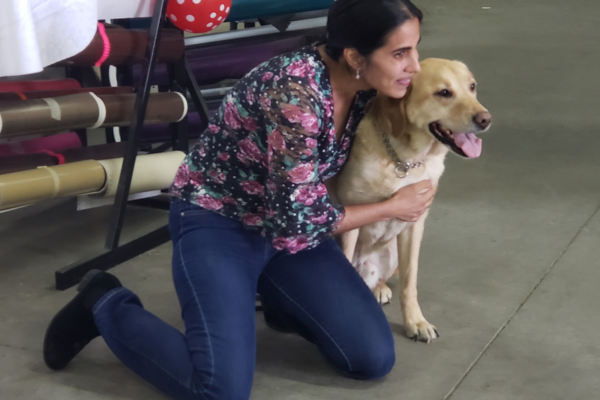One of the most common questions people ask about service dogs is “how to qualify for a service dog?” Sometimes, when a person has an invisible disability, other people or business owners question their need for one or their right to take their service dog into businesses, airplanes, etc. The ADA has specific guidelines for who qualifies for a service dog, and understanding these qualifications is key to supporting service dogs and their handlers.
Qualifying for a Service Dog
The ADA defines a person with a disability as individuals with a physical or mental impairment that substantially limits one or more major life activities. The person must have a record and be regarded as having the impairment, which can include having difficulty hearing, seeing, walking, and learning, as well as a loss of physical or mental functions.
In the past, the ADA defined the disabilities that qualify for a service dog as more visible disabilities like blindness, or ailments like PTSD for veterans. In 2010, the ADA redefined service animals and what they can do, which allows more people access to the support service dogs provide. For example, service dogs are now trained to smell high or low blood sugar levels for diabetic people, and to smell oncoming seizures for those with epilepsy. Service dogs for children with autism and some other mental disabilities help the handler manage the stress of social interactions and increase their interest in different activities.
ADA laws limit the questions a business can ask of a service dog handler to two things:
- Is this dog a service dog?
- What work or job has the dog been trained to perform?
Because those questions are open-ended to so many critical support tasks, more people are able to benefit from the support service dogs provide. For me, I am hearing impaired and have PTSD. When I’m asked those questions, I can answer “yes, it’s a service dog, and its job is to alert me”. I don’t need to explain my personal and medical history to anyone.
Visible vs Invisible Disabilities with Service Dogs
People often associate service dogs with visible disabilities, and are unfazed when they see a service dog with a blind person or a wounded veteran. Service dog handlers with invisible disabilities may receive more questions, but the tasks their dogs perform are incredibly important.
For example, with diabetes, a service dog can actually smell when a person’s blood sugar is running low before they might think to check their glucose monitor.. For epilepsy, the person actually gives off an odor that the dog can smell, and it will alert the person that they may be in seizure territory. That person can then get to a safe space to protect themselves from injury during their seizure.
I met one service dog that supported a child with a severe peanut allergy. The dog would alert if anyone brought any peanuts into the child’s classroom. They would alert the child, even if it was something as small as peanut oil in someone’s lunch. This dog was an additional support to having an Epipen, and could warn the child before they even realized they were experiencing a life-threatening emergency.
Physical vs Mental Disabilities
There’s a reason why people can only ask two questions of a service dog handler: is that a service dog, and what task is it trained to perform? People use service dogs to support both physical and mental disabilities, and most people do not want to describe a very personal health issue to strangers. There is no real difference in law between the protections for invisible or visible disabilities and between physical and mental ones. The important part is understanding that all kinds of people have all kinds of disabilities and some use this “tool” that can save their life. Our goal at Justice Speaks is to educate the public’s etiquette so people can respond to service dogs and their handlers appropriately.
Did any of these examples surprise you? What other unique tasks have you seen a service dog perform?


